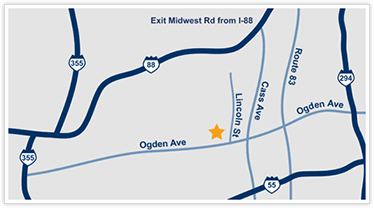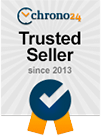How to Spot Counterfeit Money
According to Investopedia, the U.S. dollar is the world’s most popular currency. It’s also one of the most counterfeited currencies on the market. Counterfeit money is an ongoing threat neither retailers nor customers can afford to be complacent about. You might believe it’s easy to spot fake money, but counterfeiters have become extremely adept at designing bills. Fortunately, you can look for key signs of doctored money to avoid falling victim to counterfeiting.
What Are Common Ways People Fake Money?
The allure of printing free money might be tempting to some people, especially if they believe they won’t get caught and can use the money to purchase whatever they want. They might not even be aware or care that counterfeiting is a federal crime, with a penalty of up to 15 years in prison and a fine of up to $250,000.
Until recently, counterfeiting was an expensive and difficult endeavor. Counterfeiters previously used large printing presses and cut difficult designs into metal plates. Today, it’s much easier thanks to technological advances. All counterfeiting takes is a computer, scanner, and color printer.
Some counterfeiters place a bill on their scanner, and set it at its highest resolution of around 1,200 to 2,400 dpi. They scan the bill, and an image becomes a file on their hard drive. Counterfeiters soon discovered that just because the scanner picked up the high-res aspects of the bill, it didn’t print out on an inkjet printer well. The color is off, and the images look muddy. Even the best printers lose some detail, but they can still produce bills that look normal to the naked eye.
Counterfeiters also use special paper, since the paper used for money is thinner than normal. The paper you encounter daily is made from cellulose found in trees, whereas paper used in money is rag paper from linen fibers and cotton. One way counterfeiters can get around the visual imperfections is to pass off the money in dark settings such as nightclubs or busy places such as restaurants, where people pay less attention to transactions.
Why Is It Important To Identify Counterfeit Money?
Dishonest individuals will take advantage of people in any way they can to make a profit. It’s incredibly difficult to catch counterfeiters using their money because you can’t directly connect them to the bills once they’re in circulation.
If you believe you’ve come across counterfeit money, remember that once the money exchanges hands, it’s yours. So if the money is fake, you’ve lost that money. You cannot exchange a counterfeit bill for a genuine one. It’s especially important to check the authenticity of high-value bills, including $500 and $1,000 bills, because you’re trusting the payee is using legitimate money to pay for goods.
What Steps Can You Take To Spot Counterfeit Money?

You might come in contact with counterfeit money and not even know it. Ways you can help identify potentially fake money include:
- Feeling the paper. Typically, fake money doesn’t have the same crisp feel as real money. Also, on the front of real money, the blank ink has a raised feeling.
- Looking for color-shifting ink. Starting in 1996, all U.S. paper currency except for the new $5 has color-shifting ink. Tilt the bill back and forth, and if the numeral in the left-hand corner doesn’t change from gold to green or green to black, it’s fake.
- Examining the watermark. The watermark is the basis for an authentic bill. Hold the bill up to the light, and the watermarks should be visible on the bill’s right side. If you hold up the bill and don’t notice a watermark or if you can see it without holding it near the light, the bill is probably counterfeit.
- Checking the printing. An automatic red flag involves the printing, especially if you find blurry borders or text. Authentic bills involve die-cut printing plates that create detailed fine lines. They also feature finely printed text in various spots. If you cannot read that print, even with a magnifying glass, the bill is likely counterfeit.
- Using ultraviolet light. Place the bill on a white piece of bond paper, and shine the light on it. If authentic, the paper should emit a bright glow. All denominations except for the $1 will glow a different color: blue for $5, orange for $10, green for $20, yellow for $50, and red for $100.
- Searching for the security thread. This thin embedded strip runs from the top to the bottom of the bill’s face. The $5, $20, and $100 have the strip on the left of the portrait, while the $10 and $50 have it on the right.
- Investigating the serial number. All money printed by the Federal Reserve has a unique eight-digit serial number, which appears on the upper left and bottom right. On bills worth $5 and higher, each serial number begins with a letter, which reveals the bill’s series year. The series year is also printed separately on the currency, typically near the portrait of the historical figure and the Secretary of the Treasury’s signature.
What Should You Do if You Suspect the Money Is Fake?
You can always consult with professionals such as Americash Jewelry & Coin Buyers to examine money for authenticity, especially if you’re working with high-value bills. If you have concerns about possible counterfeit money, adhere to the following recommendations:
- Don’t return the money; hang onto it, and contact the authorities.
- Observe the person who gave you the money, and write down their description. Note their license plate number if possible.
- Call your local police department or Secret Service office, whose original purpose was to catch counterfeiters.
- Do not handle the potential counterfeit money. Place it in a plastic bag or envelope, and hand it over to a trusted person of authority. You can also mail it to your nearest Secret Service office.
If you’re concerned about the authenticity of your money, contact Americash Jewelry & Coin Buyers in Westmont, Illinois. We are your one-stop shop when it comes to currency and can give you peace of mind knowing your money is authentic.
Image via Unsplash by @alschim
Tags: Counterfeit, Currency, Money



